Key Takeaways
- Boise State University, a large commuter school, has emphasized use of personal mobile devices for learning both in and out of the classroom.
- From the perspective of the help desk, mobility has made it easier for clients to come for help rather than help desk staff going to them.
- The University Help Desk of Distinction relocated to a central building on campus and now occupies an open support environment called the Zone that offers multiple features and spaces to help students, faculty, and staff seeking walk-in IT support.
- Succeeding with BYOD requires establishing boundaries and understanding the cost implications.
Boise State is Idaho's largest university with over 22,000 students. The student body includes many people who have returned to school for retooling or additional education, giving the university community a diversity of ages, economic backgrounds, and learning styles. Boise State has incorporated the concept of technology fluency into its foundational coursework to address students' broad range of technology access and understanding. At the heart of this coursework is the use of personal mobile devices.
Mobile technology is important to the students because they are not on campus for a significant amount of time outside of class. Strategically, the use of mobile devices and technology in learning spaces is part of the university's plan [http://academics.boisestate.edu/wp-content/blogs.dir/1/files/2012/08/Goals-and-Strategies-without-KPIs.pdf] to "create a signature, high-quality educational experience for all students." The Mobile Learning Initiative was formed to study, assess, and integrate mobility into coursework and expand technology fluency.1
The inclusion of technology in the university's strategic plan caused the University Help Desk of Distinction, the customer care arm of the Office of Information Technology (OIT), to rethink how and what support we deliver to students, staff, and faculty. In the past our focus was on distance support. We used e-mail or the phone as a buffer between us and the person needing help. Distance support would be aided with tools such as remote control and mobile device management.
As we considered the needs of a mobile student body using their own technology, we asked if distance support was the right focus. Mobility has made it easier for our clients to come to us rather than us going to them. We wanted to bring down the physical walls and electronic buffers that separated us from those we serve. It became important to us to remove the barriers to entry, provide visibility to our services and people, and work with clients face to face.
The Strategic Challenge
In 2011, the University Help Desk of Distinction was a mid-sized support organization focused on supporting university administration. The team of 10 professional and 5 student employees handled about 28,000 tickets annually, mostly providing support over the phone or dispatching team members to administrators' desks. Like many central IT shops, the help desk was configured to handle modest amounts of walk-in traffic, but our building was located on the periphery of campus and not in a location ideal for visitors.
We knew that to remain strategically engaged in the university's mission, we needed to increase our outreach to the student body. We needed to adjust our mindset, our processes, and our location. There was no way we could effectively meet the IT needs of our students and faculty from such a remote location. We also knew that we needed to manage our time and resources to serve more people.
With a renewed focus on strategic alignment, we made a proposal to move our help desk from the periphery of campus to the busiest and most central classroom building on campus. We wanted to bring down the walls that separated us from those we serve. We felt it important to remove the barriers to entry and to provide visibility of our services and people. This proposal to better embrace walk-in support was timely in that it corresponded with the university's mobility initiatives.
The Zone
Walk-in support is extremely common in the education industry. HDI, a professional organization for the support services industry, provided us with research that showed 80 percent of higher education institutions offer walk-in support as a channel of support. Through the HDI Higher Education Forum, we have seen many examples and approaches of how to best design walk-in support. We also visited other organizations such as Apple stores and large corporations such as Google. We observed their walk-in support configuration as well as commercial implementations.
Based on these observations, we decided to set up an open room with spaces for multiple functions. Branded "The Zone," this centralized space houses our call center and a walk-in support counter (figure 1). In addition, it includes a location in which faculty and students can check out new and different types of multimedia technology, a computer lab (figure 2), and an area to print documents. The Zone has become a hub and a symbol of our concierge service to campus.
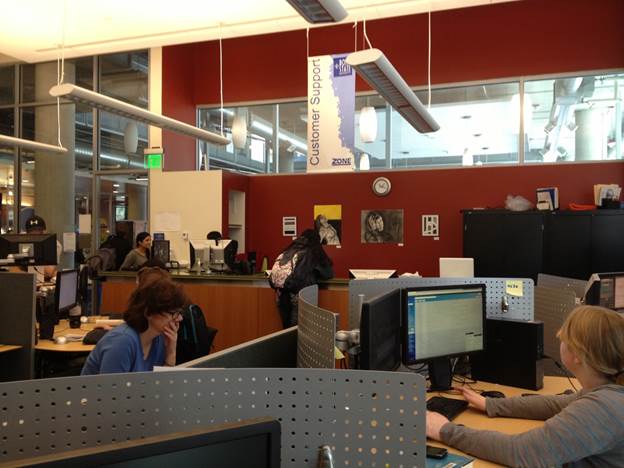
Figure 1. The Zone open space and support counter
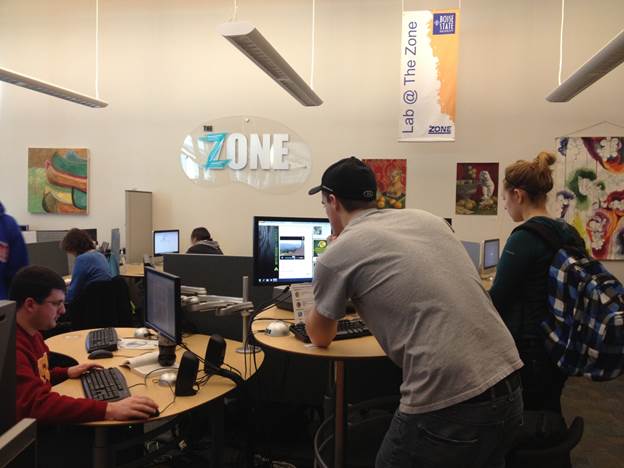
Figure 2. The Zone's computer lab
Our transformation to becoming walk-in centric took place just as the industry was talking about people bringing their own personal devices to work (BYOD). Universities have worked with students' personal equipment for many years, but now the technology is an integral and active part of their learning. Our efforts mirror what is happening in business. In the past it was not uncommon to have employees go home and work on e-mail on a personal device; now we see more employees required to use their own technology to accomplish their jobs in the office.
Knowing Our Boundaries
Our customer care staff had many concerns about moving the location of our help desk as well as adapting to these new concierge initiatives. The staff was not excited about "working in a fishbowl" and felt uncomfortable with the idea of being on display for all to see. Just after we opened the Zone we received several comments in an employee satisfaction survey that described the difficultly of working in an open environment (figure 3):
"Lots of interruptions today"
"Need less distractions"
"Lots of good distractions but it made my job difficult to focus on"
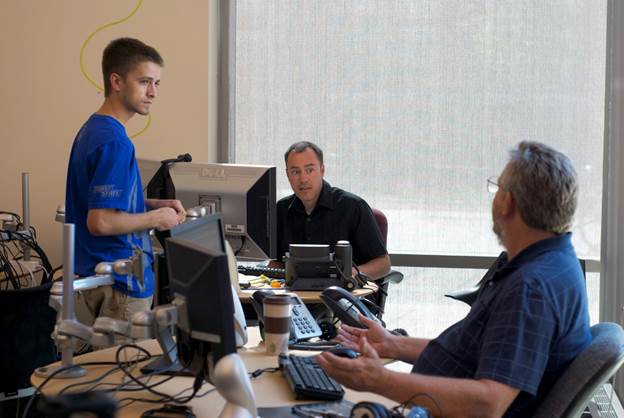
Figure 3. Some help desk staff in their new, open work environment
There were also many concerns around knowing our own boundaries, managing customer expectations, and dealing with an increased support load. As we moved forward, management tried to address these concerns, but we knew going into it there was a lot we did not know.
We estimated this change in location would increase our call volume by 10 percent, but supporting BYOD was an unknown. There was trepidation that BYOD would be a free-for-all and that the entire university community would show up demanding that we support a backlog of broken technology. We saw the need to set parameters for customers to keep this manageable. The boundary we set was one of hardware. Our initial, simple rule was, "We do not crack the case." This boundary worked, helping us set realistic expectations that we could meet.
The fear of an increase in workload was a valid concern for staff. Before the Zone, we averaged 12 walk-ins per month. At the same time that we were increasing BYOD support and making walk-in support more visible, we introduced several additional service offerings. All of our plans seemed to indicate we should expect hundreds of walk-ins.
To help us in the transition, we made the choice not to heavily communicate our change of venue, but allowed the Zone to be discovered as students and faculty passed by or told their friends about it. As a result, we saw a slow and steady increase of walk-in traffic rather than a massive surge. Instead of a marked increase of support tickets, we have seen about 0.75 percent growth each month.
Before our move into the centralized open space, walk-in traffic was a distraction to our phone calls. It meant that someone had to disconnect from the phones and deal with the person who came in. We always tried to deal with people in the order they arrived, whether by phone or in person, but it never seemed to work out gracefully. People ended up waiting to be helped until there was a break in the phone calls. Now that we have a sustained walk-in customer base, we have people dedicated to handling the traffic. Help desk staff do not need to go back and forth between helping someone on the phone and someone in person.
After implementing these changes, it became clear that walk-in support is not much different than any other support channel. We can do predictive analysis and use formulas such as Erlang C to calculate how many people we need on staff (figure 4). To us, walk-in traffic is no different than answering the phones, returning e-mails, or dealing with chat support. Walk-in support is simply another tool to support the mission of the university.
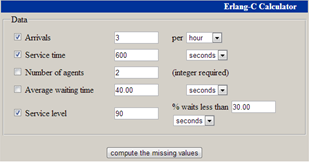
Figure 4. Example of using the Erlang C calculator
Knowing Our Costs
We have always used the same people to answer the phone as we send out to a professor's office. Our approach to desktop support has been what the 2012 HDI Desktop Support Practices and Salary Report defines as "a support center function where analysts rotate support center and desktop roles as scheduled." We do not differentiate between desktop support and the help desk: both fulfill the same end goal. As a result, we do not differentiate between walk-in support and desktop support. This viewpoint enabled us to understand the actual cost element, and we were well prepared to embrace walk-in support.
When we moved to the Zone, we wanted to increase walk-in support, but we also wanted to closely manage our resources. Industry often contends that walk-in support is expensive and thus should be limited. The 2011 HDI Support Center Practices and Salary Report stated that walk-in support is "the most expensive support channel (median = $20)." In our analysis we found this was a shortsighted viewpoint because it only looks at the first tier. Coupling the first tier data with industry costs on desktop support gives a better view of the true cost of support.
Our analysis found that desktop support escalations are far more expensive than dealing with a customer at first contact. Let's assume that the normal flow of a desktop support incident starts with a call to the help desk, which costs Boise State $18 per call on average. Then assume the call is escalated to the desktop support team. After an escalation, we spend a significant amount of time scheduling appointments and tracking down individuals for additional information. We also spend a lot of time traveling between offices. All of these factors add an additional $39, for a total of $57 per ticket. A walk-in support call is currently running us about $28.33 per ticket. Figure 5 shows estimated costs.
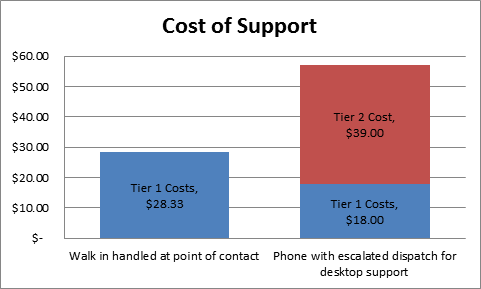
Figure 5. Estimated costs for help desk support, walk-in versus escalated
Walk-in support thus helps us be more efficient with our time and resources. Even if all we save is a five-minute walk for each ticket, over time this adds up. It also helps with customer service when we can solve issues in real time. Our median time to resolve for desktop support is 30 hours from the time the ticket is opened. For our walk-in support, the median time is under an hour.
We also drove down the costs by using existing student labor. We were staffing numerous computer labs across campus, so we decided to take the computers from several of those labs and scatter them into the hallways and lobbies of the university. The student staff from those labs was then repurposed into helping with our walk-in support initiatives.
Finding Success
Our physical move to the Zone took place over the summer of 2011, but transformation has been ongoing. For example we started with only a small handful of checkout devices, but now check out several flavors of laptops, tablets, and media equipment (figure 6).
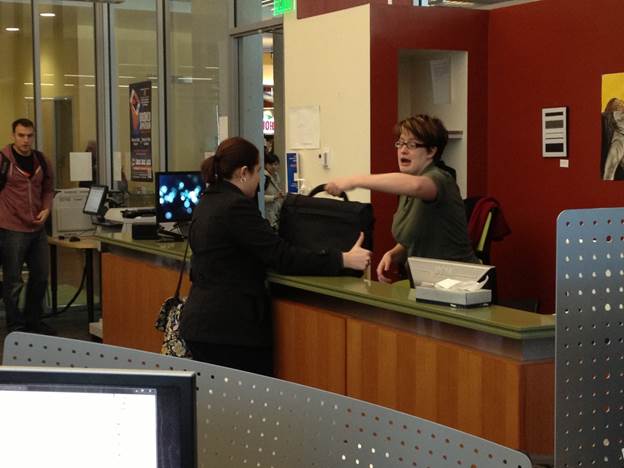
Figure 6. Clients may check out devices from the help desk support counter
Our original estimate of a 10 percent increase in tickets was low. We actually have seen a 40 percent increase, and we are now transacting about 40,000 tickets per year. Only part of this increase is based on volume. Being more public has given us incentive to formalize processes and to keep better track of our interactions with customers. We found many things we were doing that we were not tracking. Figure 7 shows the growth in help tickets based on type.
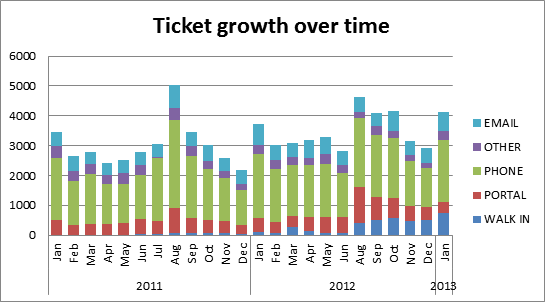
Figure 7. Ticket growth by month, January 2011–January 2013
We initially staffed a single person to handle consultations, support, and checkouts. It immediately became apparent that quicker operational tasks, such as checking out a tablet, were interrupting longer interactions such as a consultation (figure 8) or in depth support of a laptop. To resolve the issue, we began double staffing the zone.
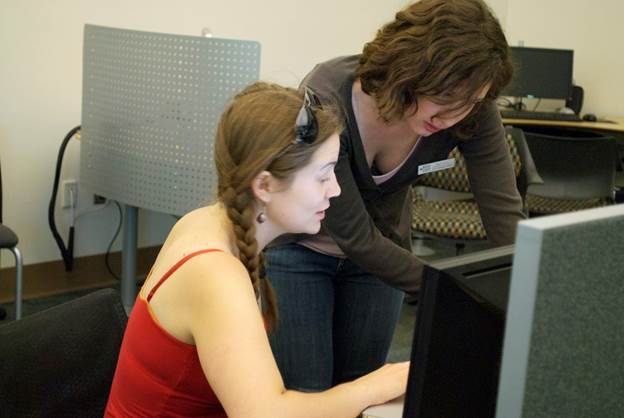
Figure 8. Help desk consultation
Reception of the Zone has been so positive that we have created two additional satellite Zone locations. The first satellite was created in January 2012 and is right off the main entrance of the student union (figure 9). The second was opened August 2012 in our brand new business building (figure 10). Both are smaller than the original Zone and focus on the quicker operational tasks, such as checkout and basic support. If time is needed for a full consultation they will refer the student to the flagship Zone.
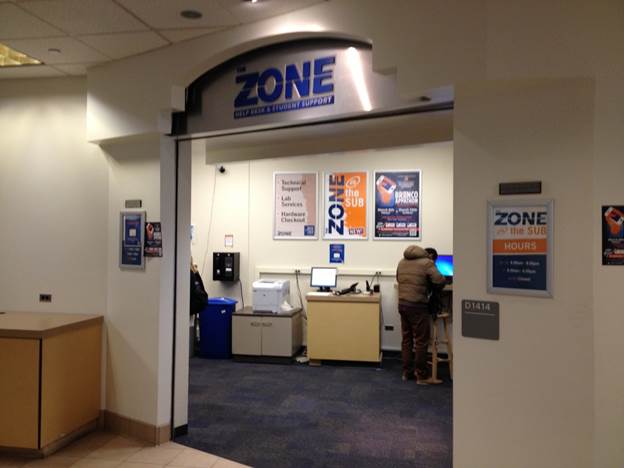
Figure 9. Satellite Zone in the student union
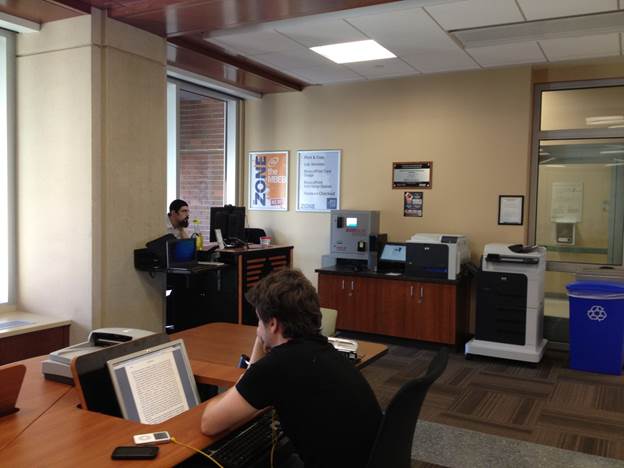
Figure 10. Satellite Zone in the business building
Walk-in support improved our image on campus and demonstrates our engagement with the mission and strategies of the university. As faculty and administrators of the university pass by, they see our department actively engaged in the learning process. It shows that we are not just a reactionary cost center, but are actively helping students achieve their goals at the university.
We've also seen improvements in customer satisfaction. For some, it is easier to walk to the help desk than it is to call us, and if we can solve an issue on first contact without having to escalate it, people are immediately satisfied. People like options, and adding walk-in service to our service suite gives the impression that that we offer more services. It is better illustrated in the words of one of our patrons:
"As always, I went in to The Zone with a question and walked out minutes later with the answer. I have had nothing but excellent customer service from all the employees and Allyanna was no exception. She had me log on and access my Blackboard. She then walked me through the steps and showed me how to email one person, a group or the entire class."
We regularly survey customers that we assist, and I love seeing the results and reading through the feedback. Seeing that we are making a difference really helps reinforce the strategic decisions we have made to invest in walk-in support. As one student put it,
"I have received help at the Zone twice for various video projects. Both times, [they] stayed late to help me. I'm very grateful for, and particularly impressed by [their] committed service."
Or even better, "I love the Zone!"
The numbers in our surveys show improvement as well. We started with a customer satisfaction rate of 4.7 out of 5.0. Over time we have been slowly increasing this trend to an average 4.75 for 2012 and a goal of 4.8 for 2013 (figure 11).

Figure 11. Increasing customer satisfaction, 2011–2013
Max Davis-Johnson, assistant vice president, Office of Information Technology, and Dale Pike, director of Academic Technologies, explain the Boise State Mobile Learning Initiative, including the Zone, in this video (4:29 minutes).
In addition to cost savings, customer service improvements, and improving our image, walk-in support has been a driver to align OIT with Boise State University's strategic directions. We are not just providing technology to campus, we are actively engaged in the delivery of the Boise State signature educational experience. Your situation may not be just like ours, but we think you can be confident saying, "Mr. Help Desk Manager, tear down this wall!"
1. In September 2012 Online Colleges recognized Boise State's move toward mobility in "11 colleges going all in on mobile."
© 2013 Mark Fitzgerald. The text of this EDUCAUSE Review Online article is licensed under the Creative Commons Attribution-NonCommercial-NoDerivs 3.0 license.
